How Hitman brilliantly remakes levels by changing the people, not the polygons
The architecture may not change much, but Sapienza isn't the same at night.
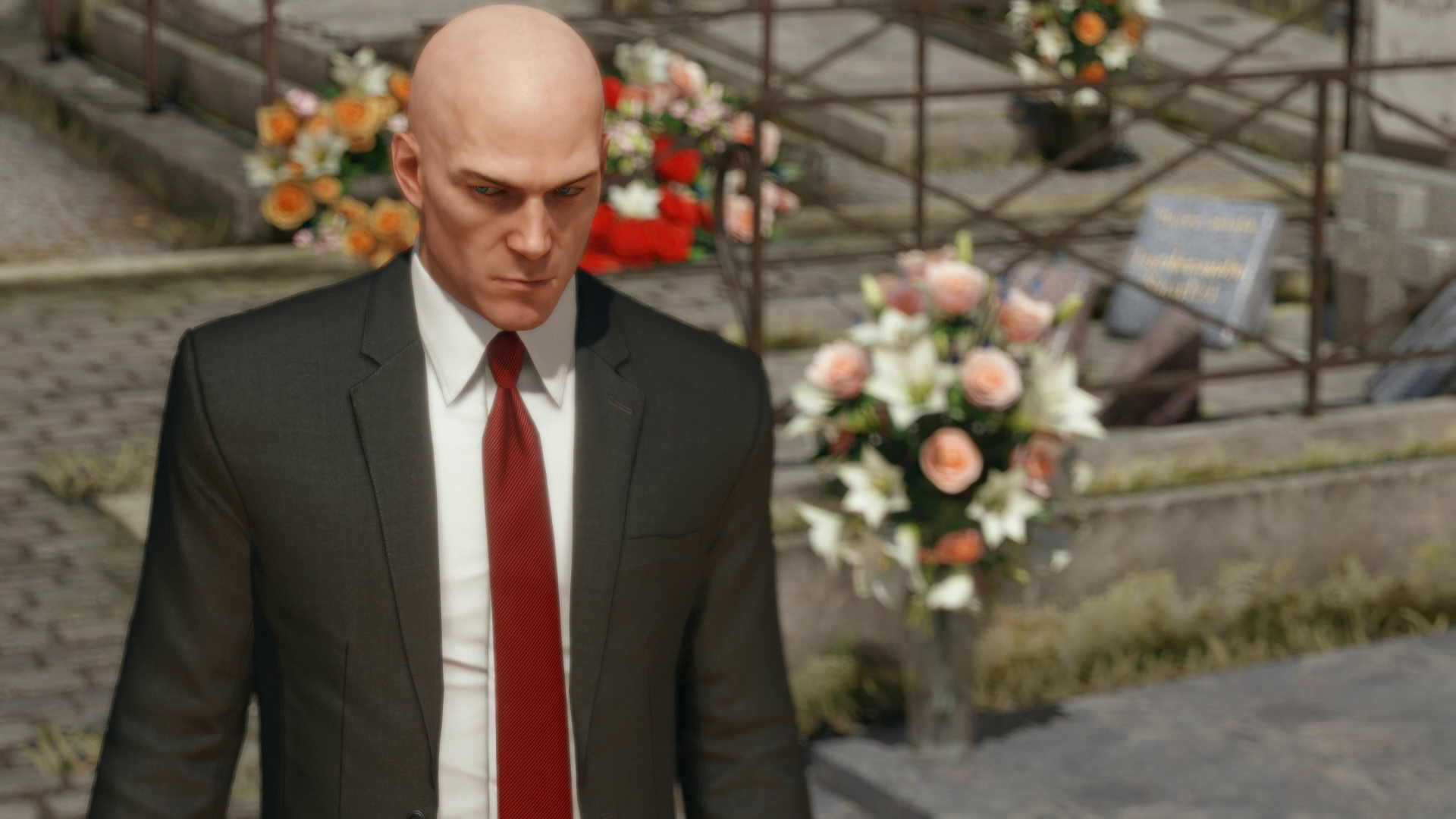
The rendering of game worlds tends to be the focus of their praise: The haunting decay of Metro 2033's subway cities, the attention to detail in GTA V's storefronts, the postcard beauty of The Witcher 3's grand vistas. Often, though, these discussions skip over the less tangible aspects of a place: its atmosphere, its purpose, its people. A world’s inhabitants define it as much as its appearance, and can transform a familiar environment into a foreign one without shifting a single polygonal brick.
A world’s inhabitants define it as much as its appearance, and can transform a familiar environment into a foreign one without shifting a single polygonal brick.
Hitman—the game and the franchise—exemplifies the notion of systemically-defined space. The clockwork routines of its people imprint themselves on the environment: this rooftop is where the guard takes his smoke break, that apartment is where the trainee chef argues with his sister, oblivious to the professional chameleon sneaking in and stealing his uniform. AI routines dictate how we navigate the world, directing us down certain paths and establishing distinct associations between form and function. Our passage through a place becomes part of its identity.
The game I always come back to when thinking of the effect people have on a space is Dragon Age: Origins. Depending on your chosen origin story, you begin your adventure in either the Dwarven city of Orzammar, the Elven Alienage, the Mage Tower, the Brecilian Forest, or the town of Highever. Aside from Highever, you'll revisit each location later in the game from the perspective of The Warden. Thanks to the war with the darkspawn, your home is not the same place you left it, with the Alienage on the brink of riot, Brecilian Forest plagued by disease, and the Mage Tower overrun with abominations. Though each location looks the same, the atmosphere is far more grim, with hopeless faces and hostile glares emphasizing the human, Dwarven, and Elven cost of the war in a way no bombastic battle can.
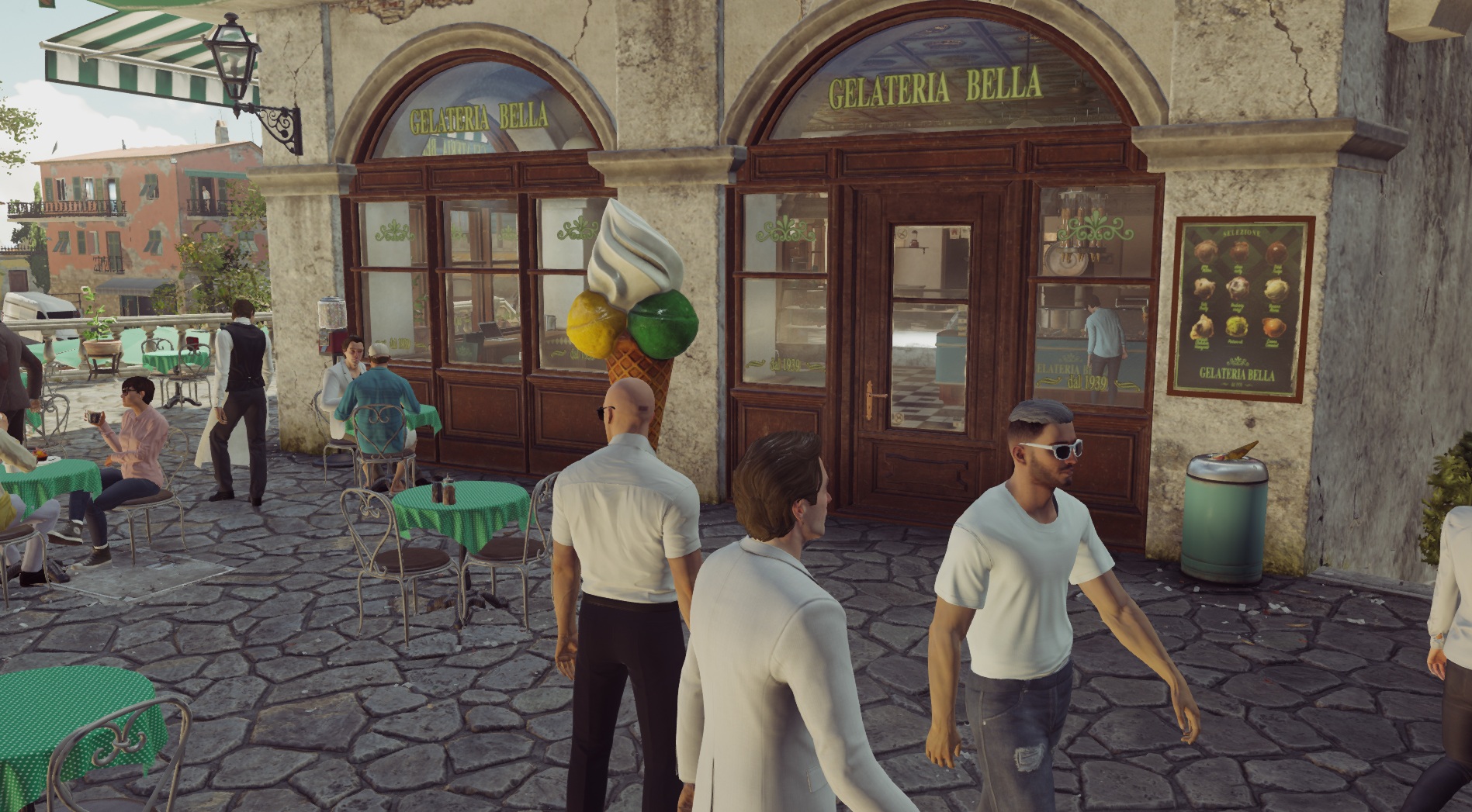
Hitman recontextualizes familiar locations even more dramatically than Dragon Age with its bonus episodes, which modify the Sapienza and Marrakesh maps by repopulating them with fresh actors and different AI routines. Because Hitman is all about manipulating and deceiving the AI, the new denizens provide a raft of new challenges, forcing players to switch up tactics and approach the familiar locations from a fresh perspective. Hitman is at its best when you're exploring the interplay of its systems, overflowing sinks near exposed electrical wires and dropping weapons on patrol paths to trick guards into leading you to the security office. This is the kind of experimentation the bonus episodes focus on, giving you a whole new batch of virtual puppets to knock out, strip down to their underwear, and dump inside empty refrigerators.
The first bonus mission, set in Sapienza, is an excellent example of how an environment’s actors can transform it. Sapienza is Hitman’s second location, and in the original mission it features an elegant Italian town basking beneath the midday sun, its majestic villa and sweeping seaside vistas evoking a sprawling grandeur. It's the largest level of the first season—or at least it feels that way because it's so packed with possibility. Secret passages lurk behind loose walls. A valuable disguise lies waiting inside a church morgue. Gunpowder cannons peek from the crenellations of a ruined castle. The possibility space is as large as the town itself.
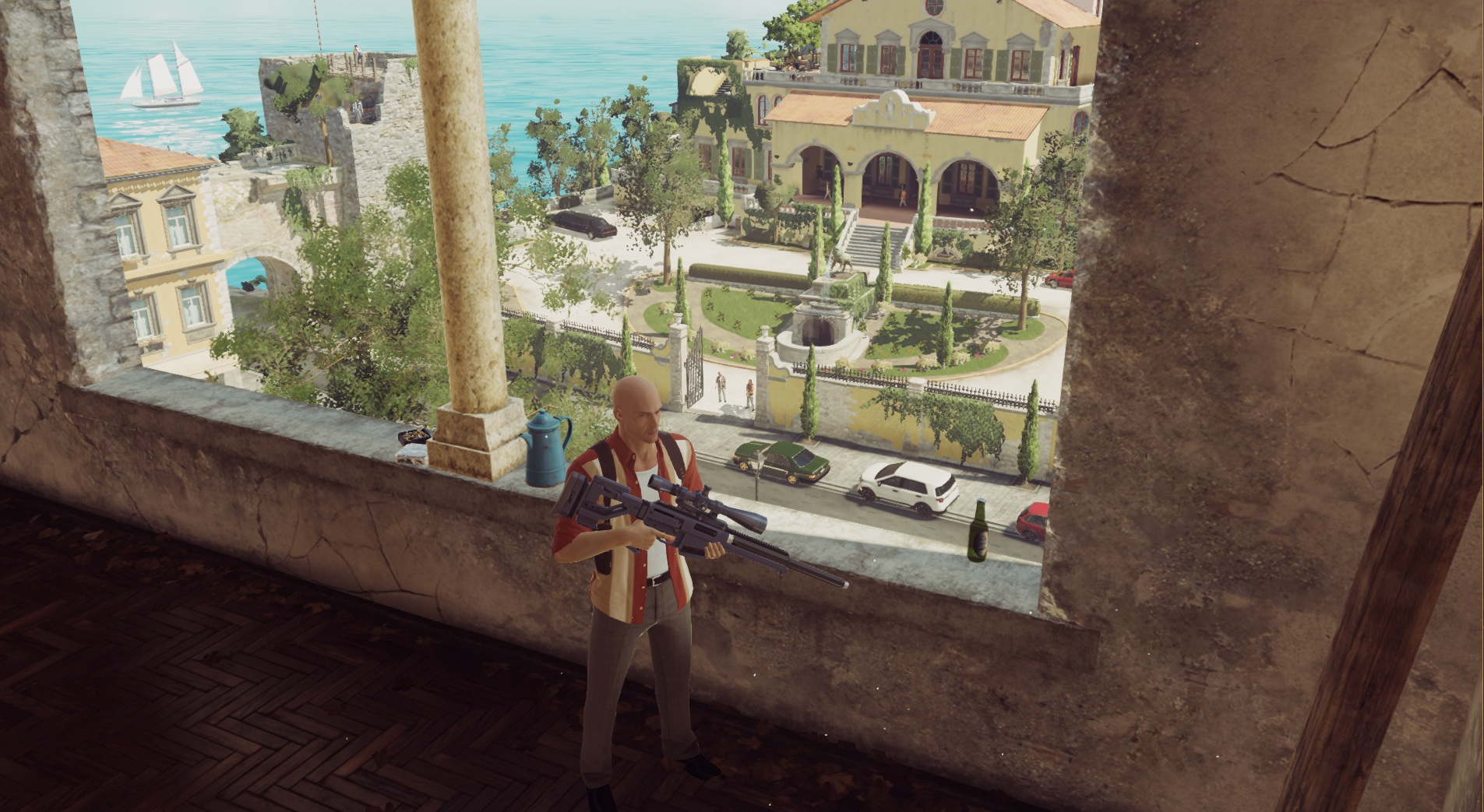
The architecture of the buildings and byways may remain the same, but the people have changed dramatically.
The Sapienza that features in the bonus episode, though, is a different beast. Night cloaks the town in shadow, reducing visibility and forcing you to sneak in closer than normal to suss out the situation. Fences close off access to the beach and the villa, adding a claustrophobic pressure to the challenge of remaining unseen. Streets that once felt breezy and boisterous now seem cold and cloistered, their crucial lines-of-sight blocked by barricades and movie props. Guards travel in pairs and workers cluster beneath a handful of floodlights, refusing to wander off for an easy takedown. Despite the darkness, silent assassinations are tougher than ever.
Gone are the town's ordinary residents, replaced by rabid movie fans scrambling to catch a glimpse of the blockbuster being filmed in Sapienza's main street. Hired thugs give way to professional security guards, their focus keen and their trigger fingers notably less itchy. Cleaners and gardeners sleep the night away, their valuable blue-collar invisibility stripped from Agent 47's toolkit. In their stead, camera operators and pyrotechnicians hurry to and fro, their hawkish eyes quick to out 47 as an imposter. To survive their gaze, you must approach Sapienza as if it were an entirely new location. The architecture of the buildings and byways may remain the same, but the people have changed dramatically.
The biggest gaming news, reviews and hardware deals
Keep up to date with the most important stories and the best deals, as picked by the PC Gamer team.
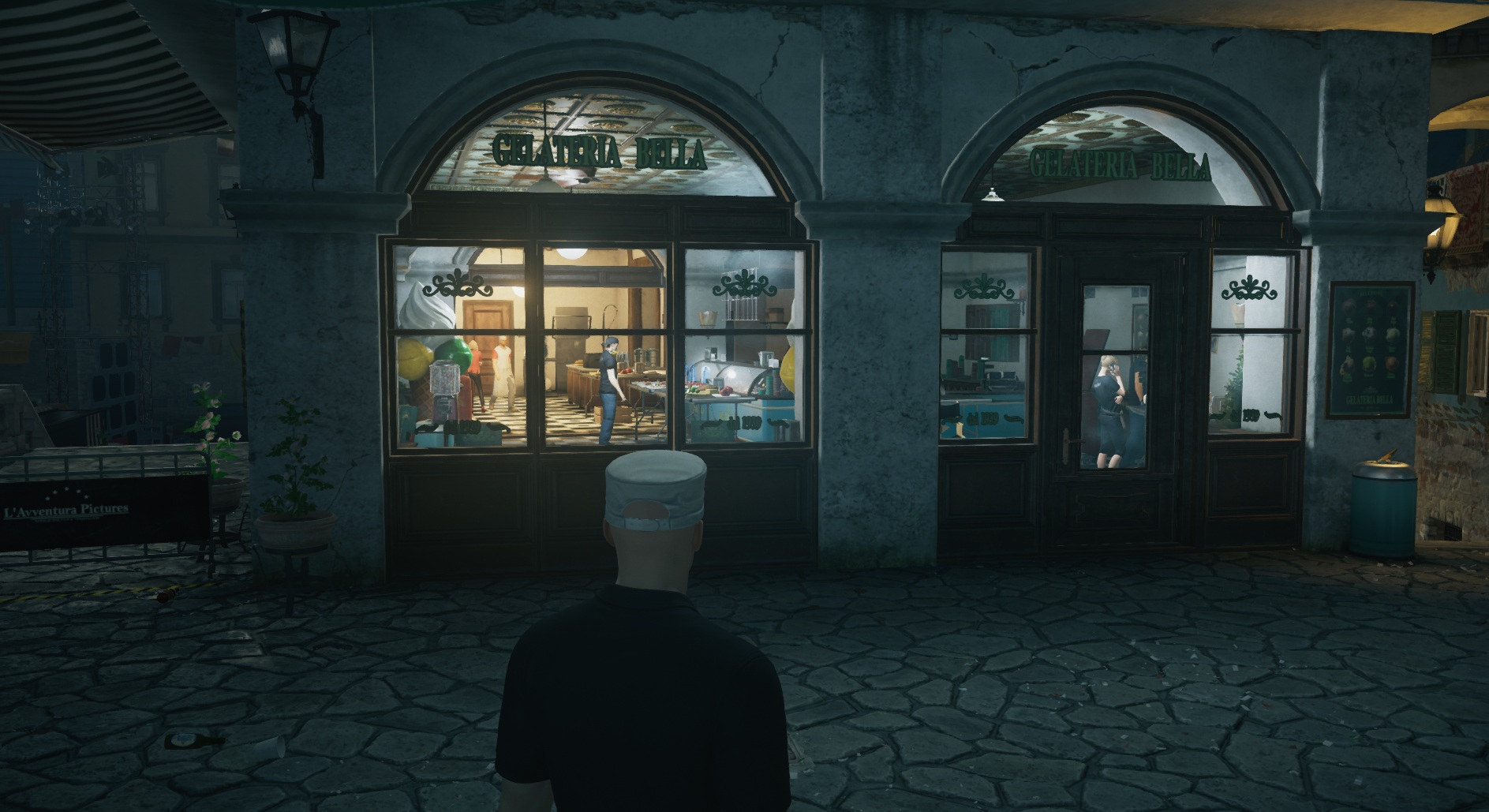
What was once a hostile place loosens its tie and untucks its shirt, adopting the laid-back air of school grounds after the end-of-day bell.
Consider Sapienza's Gelateria Bella café. Formerly a hotbed of civilian activity best avoided, at night it shuts its doors and becomes a break room for exhausted film crew and catering staff, a sanctuary where they vent their frustrations and helpfully clue you into valuable opportunities. What was once a hostile place loosens its tie and untucks its shirt, adopting the laid-back air of school grounds after the end-of-day bell. Its locked doors and inattentive inhabitants give it a sense of safety, as much your sanctuary as it is the film crew's. Forget avoiding the café; at night, it's one of the first places you'll want to visit.
The purpose a place serves informs its character just as clearly as its aesthetics. Take the clock tower overlooking Sapienza's main street: during the daytime, its stairwell echoes with silence, its empty roof the perfect sniper's perch. It is a monument to cold, clinical death, a place for those wanting to distance themselves from intimate assassination.
The second time around, though, the roof of the clock tower becomes a camera nest, playing host to both a cameraman and a security guard. Stripped of its solitude, the tower takes on a new purpose. Eliminating its occupants away from prying eyes and ears nets you two disguises, all the more precious given Sapienza’s night-time crowd. Its elevated vantage is equally useful, affording a clear view of the clockwork routines whirring away in the street below—an opportunity denied by the decentralised nature of the level during the day. Physically and conceptually, the tower becomes a pillar of your second trip to Sapienza.
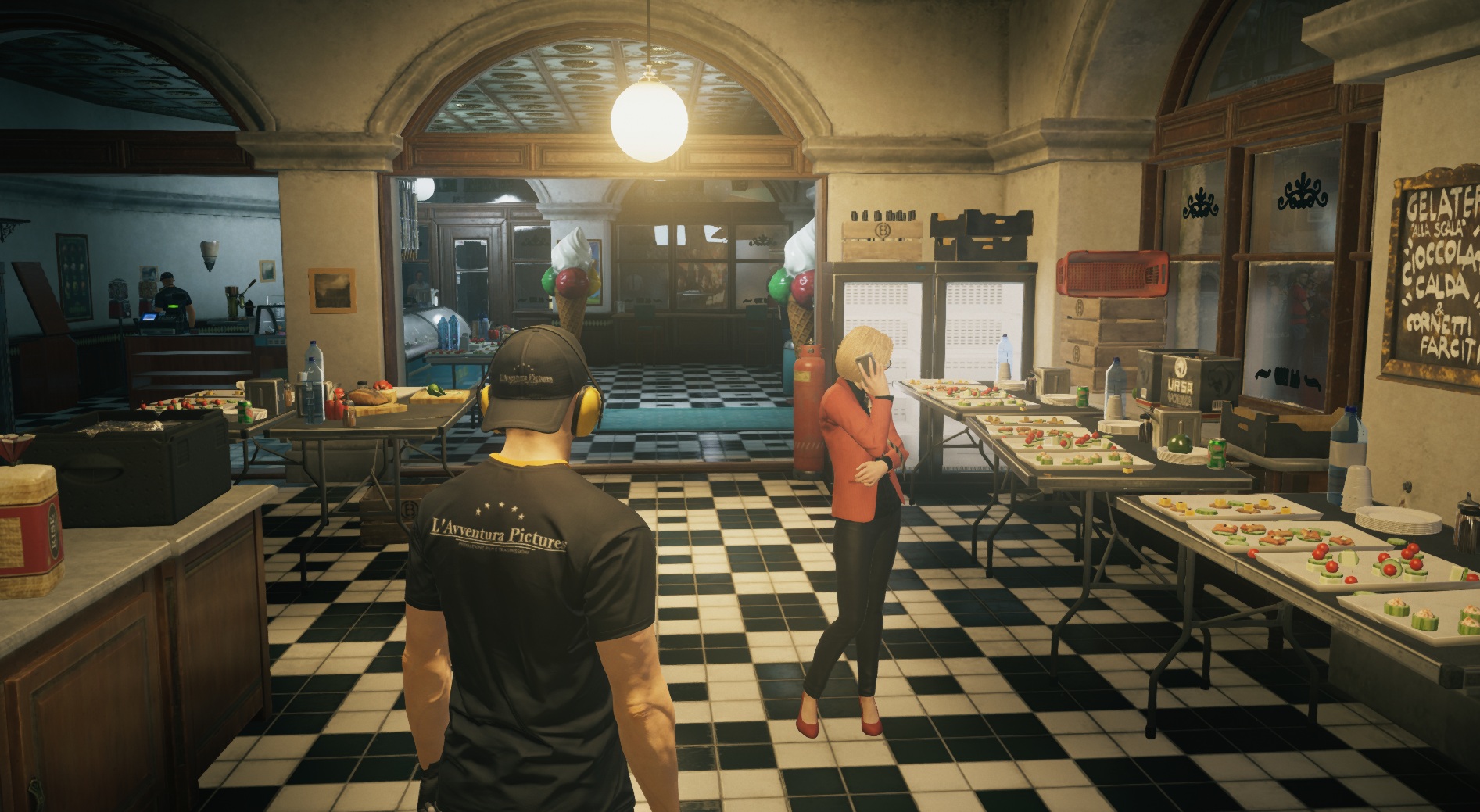
If there's one word to describe the Sapienza bonus mission, it's focused. Beyond its smaller area, the mission foregoes roaming targets for a fixed one: the movie star Dino Bosco, revealed to you right as you begin the level. By centering your attention on a single location, the level becomes more directed than its previous incarnation, a case of focusing on the how rather than the who and where.
This design produces a Sapienza divided into regions of tiered intensity, concentric zones of escalating danger focused on the boisterous Bosco. On the periphery, the streets are quiet, the thick shadows masking the evidence of your misdeeds. As you work your way onto the film set, security steps up its presence and its vigilance, demanding patience and planning to remain incognito. Danger rises like the clicking of a Geiger counter, its steady ascent in sharp contrast to the fluctuating tension of stalking Silvio Caruso and Francesca De Santis during the day-time.
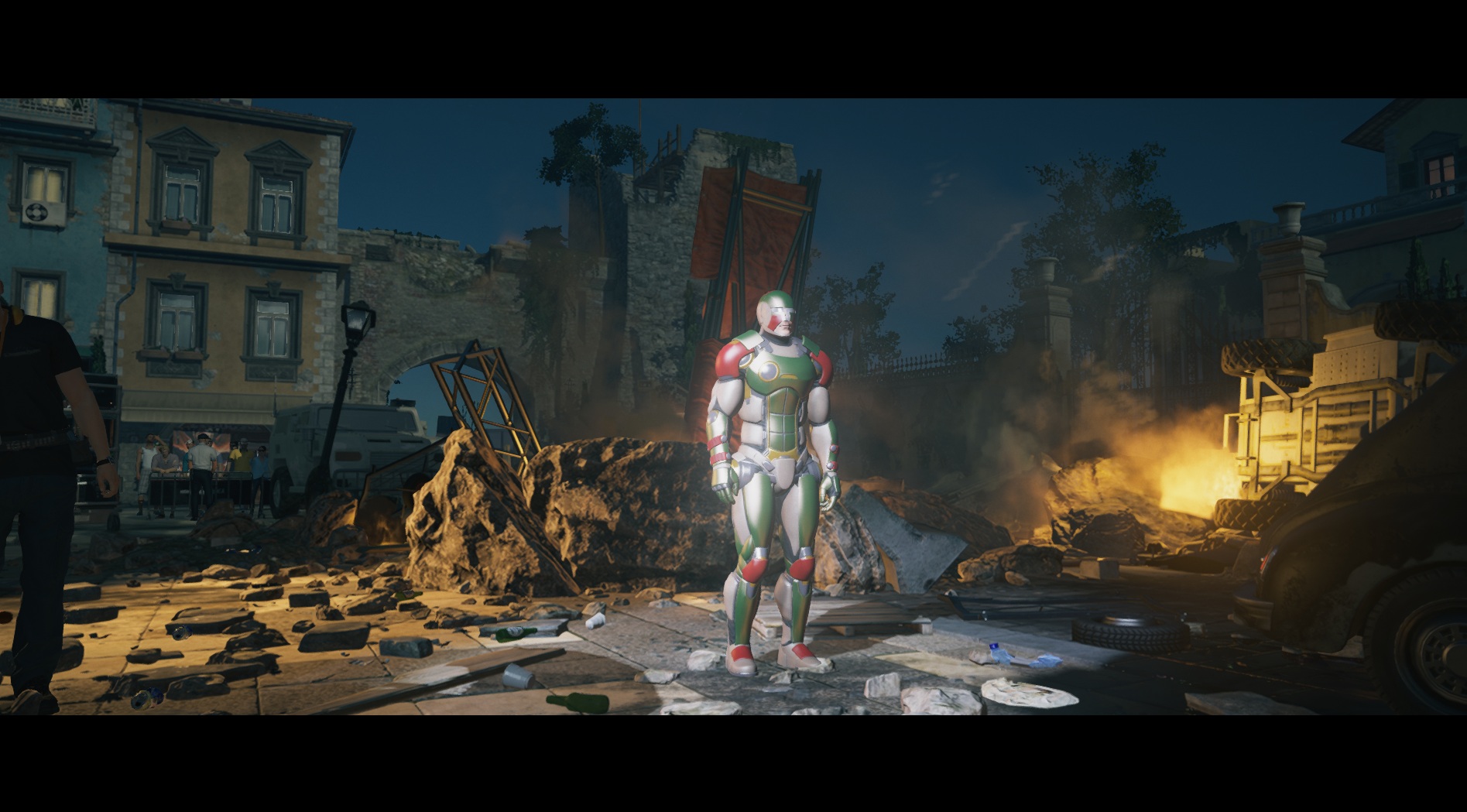
Bosco's preference for standing in the spotlight instead of wandering secluded alleyways drastically alters the pacing of the episode. Impulsive hit-and-run tactics are out of the question; patient observation is the only way to complete your mission undetected. Guns are suddenly useless against Bosco's Iron Man suit, while his massive ego ensures he's always being watched, waited on, and fawned over. Just like the movie under direction, you're going to have to throw your practiced script out the window if you want a hit on your hands.
As Sapienza shows, how we perceive a location is as much about its people, its mood, and its focus as its aesthetic. If the first trip to Sapienza was a lazy summer vacation, the second is a guided tour, its intimidating freedom exchanged for a smaller, tighter task. From Paris to Hokkaido, Hitman is a shining example of spatial economy, leveraging assassination challenges, escalation missions, and elusive targets to squeeze every drop of blood out of its exotic locations. Season Two might not have a release date yet, but with so much left to explore in Season One, I'm more than happy to wait.

